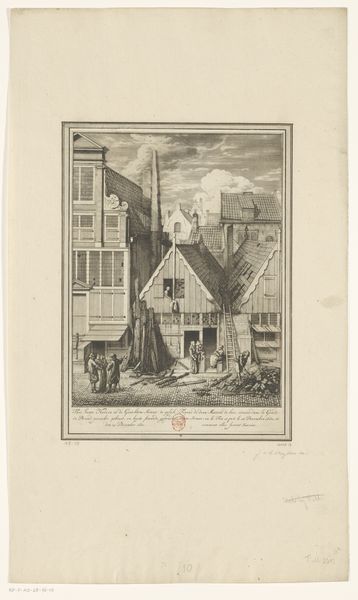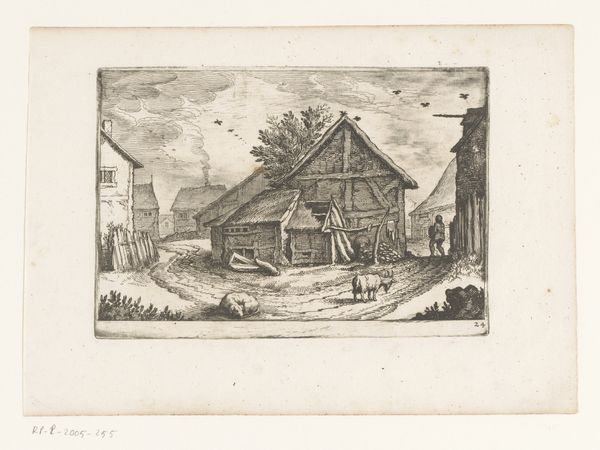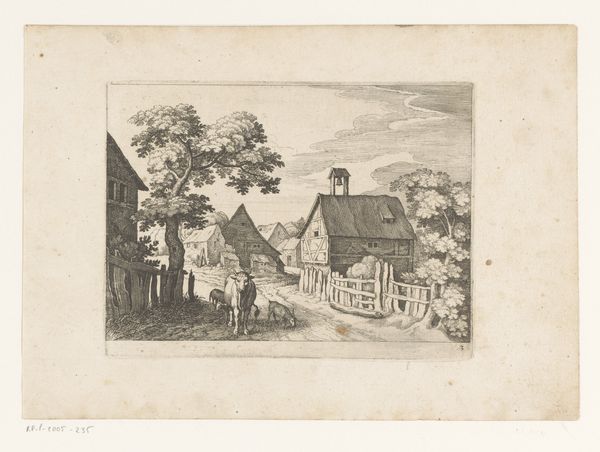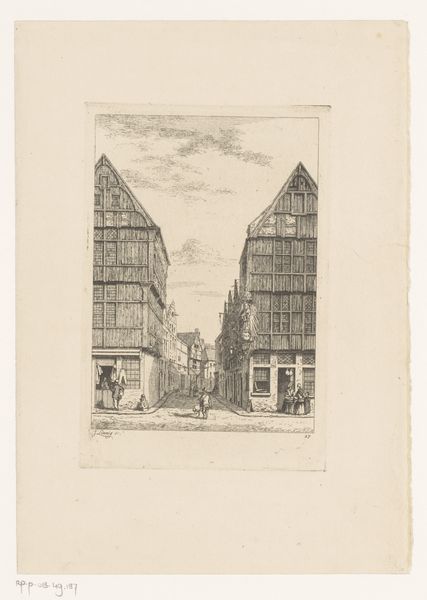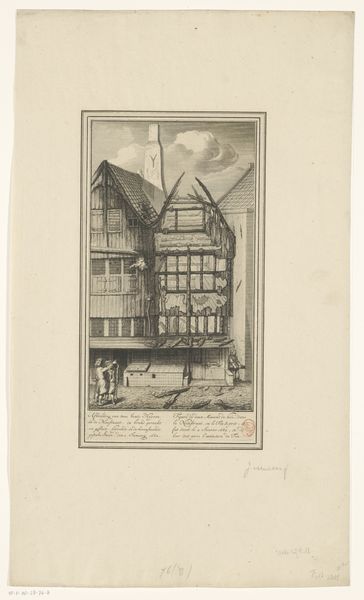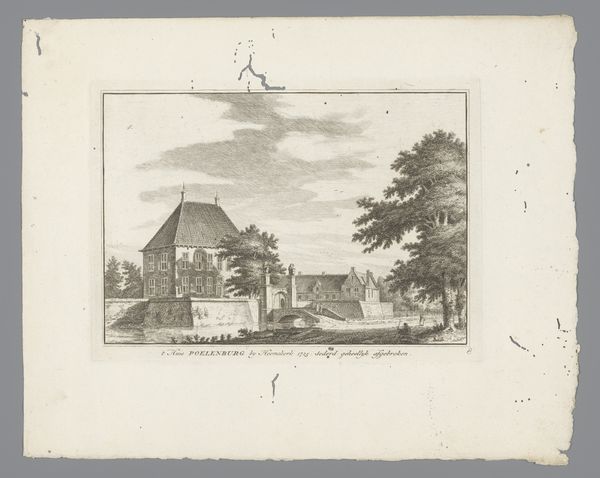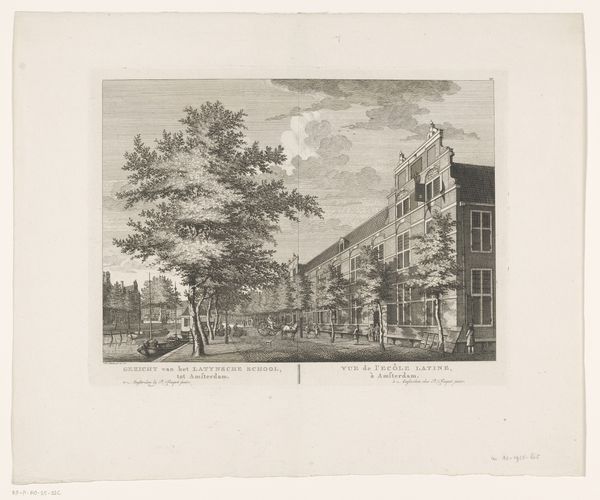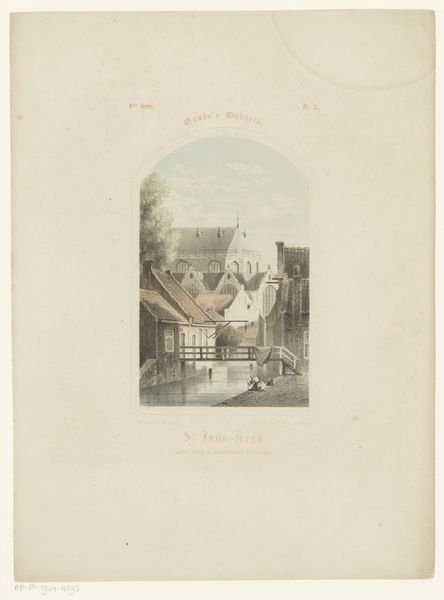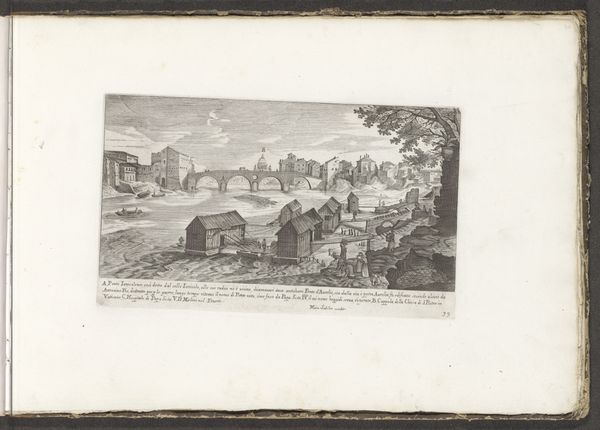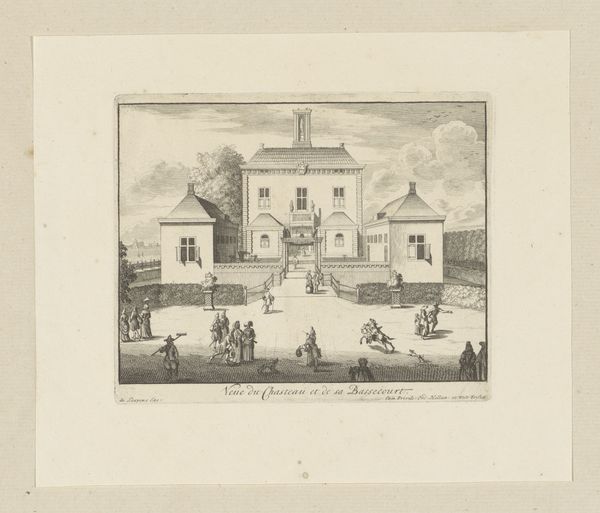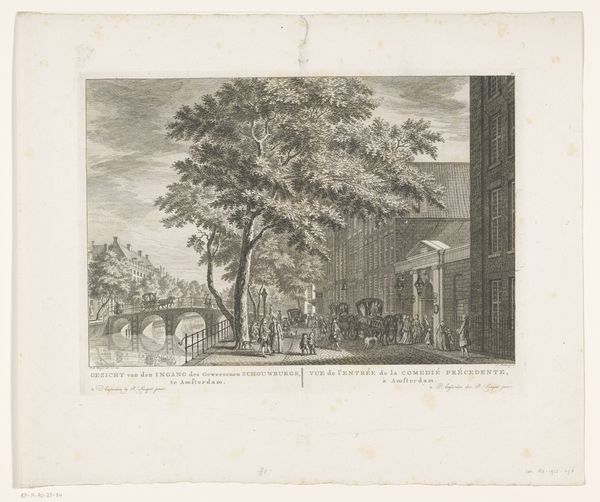
Ruïne van een half afgebrande terpentijnoliebranderij op de Passeerdersgracht, 1683 1690 - 1735
0:00
0:00
drawing, print, etching, paper, ink
#
drawing
#
baroque
#
dutch-golden-age
# print
#
etching
#
landscape
#
paper
#
ink
#
cityscape
Dimensions: height 247 mm, width 203 mm
Copyright: Rijks Museum: Open Domain
Editor: This etching, "Ruïne van een half afgebrande terpentijnoliebranderij op de Passeerdersgracht, 1683," made with ink on paper by Jan van der Heyden, sometime between 1690 and 1735, depicts what appears to be a burnt out building in Amsterdam. It’s stark. What can you tell me about this piece? Curator: This cityscape, rendered in etching and ink, invites us to consider the intersection of urban development and disaster in 17th-century Amsterdam. It's not merely a depiction of ruin, but also a commentary on the social fabric that's constantly being reshaped by these events. Consider the seemingly ordinary lives continuing on the periphery; what narratives are being omitted, and who bears the brunt of these urban calamities? Editor: That makes me think about the individuals living in this bustling center, their experiences probably very different based on gender and class. Do you see specific elements in the artwork hinting at the era’s socio-economic disparities? Curator: Absolutely. The detail and labor in the architecture contrasts sharply with the damage done to this industry. The etching reveals a tension between prosperity and vulnerability. How might the burning of a turpentine oil refinery have affected the working class dependent on that industry, particularly women and children who likely labored there? What did urban renewal mean for them? Editor: I hadn't considered the direct human cost reflected in the image, beyond the physical ruin. It’s sobering to realize that this seemingly straightforward depiction also opens into deeper issues. Curator: It pushes us to contemplate how such prints contributed to the public's understanding and perception of urban disasters and social realities. We should see it not just as a picture but as a historical document reflecting and shaping socio-political attitudes of its time. Editor: Thank you, I’ve really learned how to look beyond the image and ask more challenging questions. Curator: Indeed. Art is a conversation, a provocation to think more critically about our past and present.
Comments
No comments
Be the first to comment and join the conversation on the ultimate creative platform.
